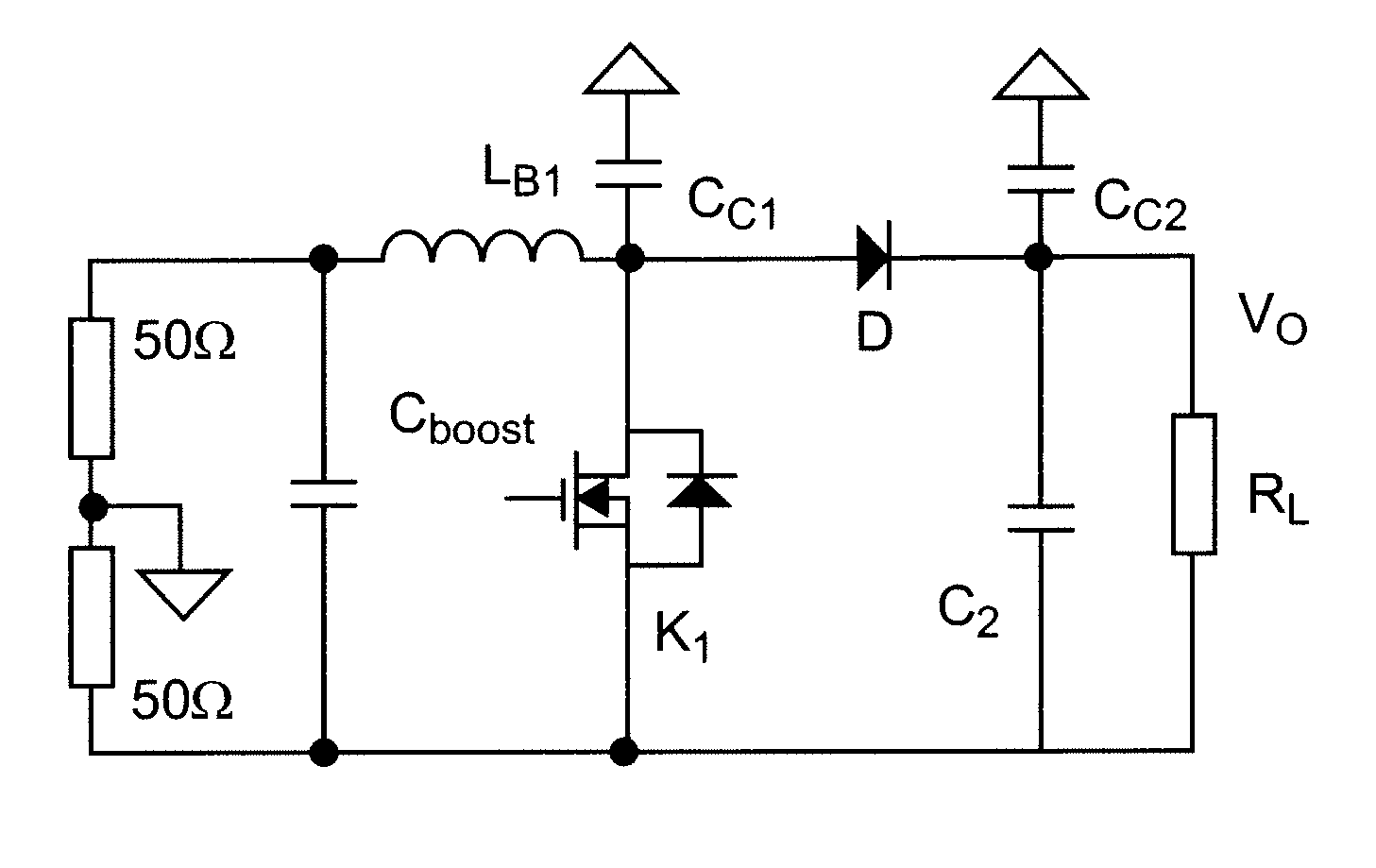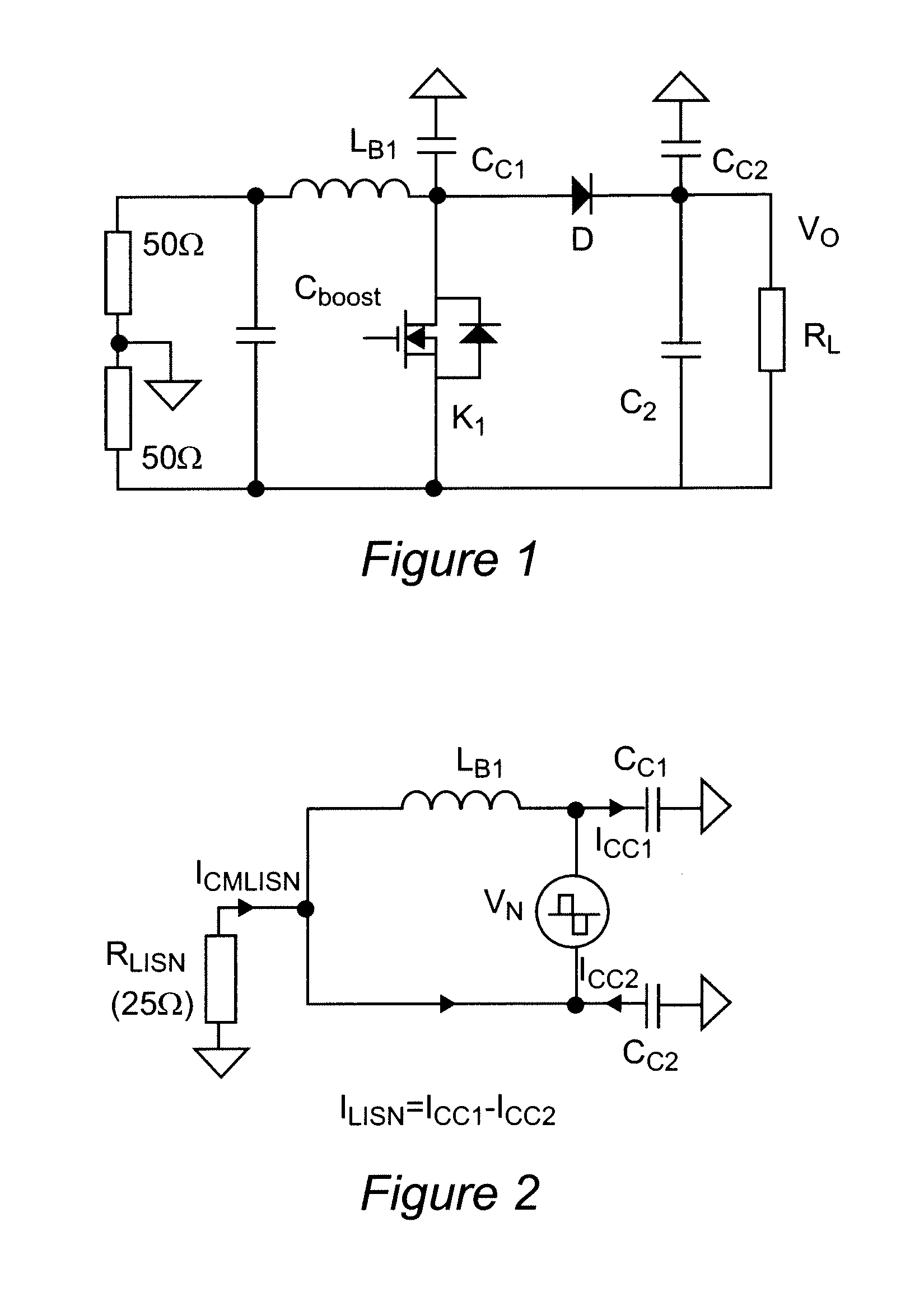Reducing Common Mode Noise of Power Factor Correction Converters Using General Balance Concept
a power factor correction and general balance technology, applied in the direction of electric variable regulation, process and machine control, instruments, etc., can solve the problems of affecting the efficiency of the converter, and the use of the switching arrangement as a source of common mode (cm) noise, etc., to achieve the effect of substantial cancellation of common mode noise, low volume, and simple switching arrangemen
- Summary
- Abstract
- Description
- Claims
- Application Information
AI Technical Summary
Benefits of technology
Problems solved by technology
Method used
Image
Examples
Embodiment Construction
[0017]Referring now to the drawings, and more particularly to FIG. 1, there is shown a schematic circuit diagram of a boost power factor correction converter (but without an input rectifier, bridge or other power input arrangement being illustrated since the nature of the power input is irrelevant to an understanding of the invention and principles thereof sufficient to its practice) of a general type to which the invention is particularly applicable. The voltage boost circuit of FIG. 1 will also enable the application of the principles of the invention to other types of power supplies and converters such as DC to DC converters, dual boost PFC converters and inverters, forward converters, flyback converters or any other power circuit topologies. Further, it should be understood that since FIG. 1 and the equivalent circuit model of FIG. 2 are arranged to facilitate an understanding of the basic principles of common mode (CM) noise and its causes, no portion of either Figure is admitt...
PUM
 Login to View More
Login to View More Abstract
Description
Claims
Application Information
 Login to View More
Login to View More - R&D
- Intellectual Property
- Life Sciences
- Materials
- Tech Scout
- Unparalleled Data Quality
- Higher Quality Content
- 60% Fewer Hallucinations
Browse by: Latest US Patents, China's latest patents, Technical Efficacy Thesaurus, Application Domain, Technology Topic, Popular Technical Reports.
© 2025 PatSnap. All rights reserved.Legal|Privacy policy|Modern Slavery Act Transparency Statement|Sitemap|About US| Contact US: help@patsnap.com



